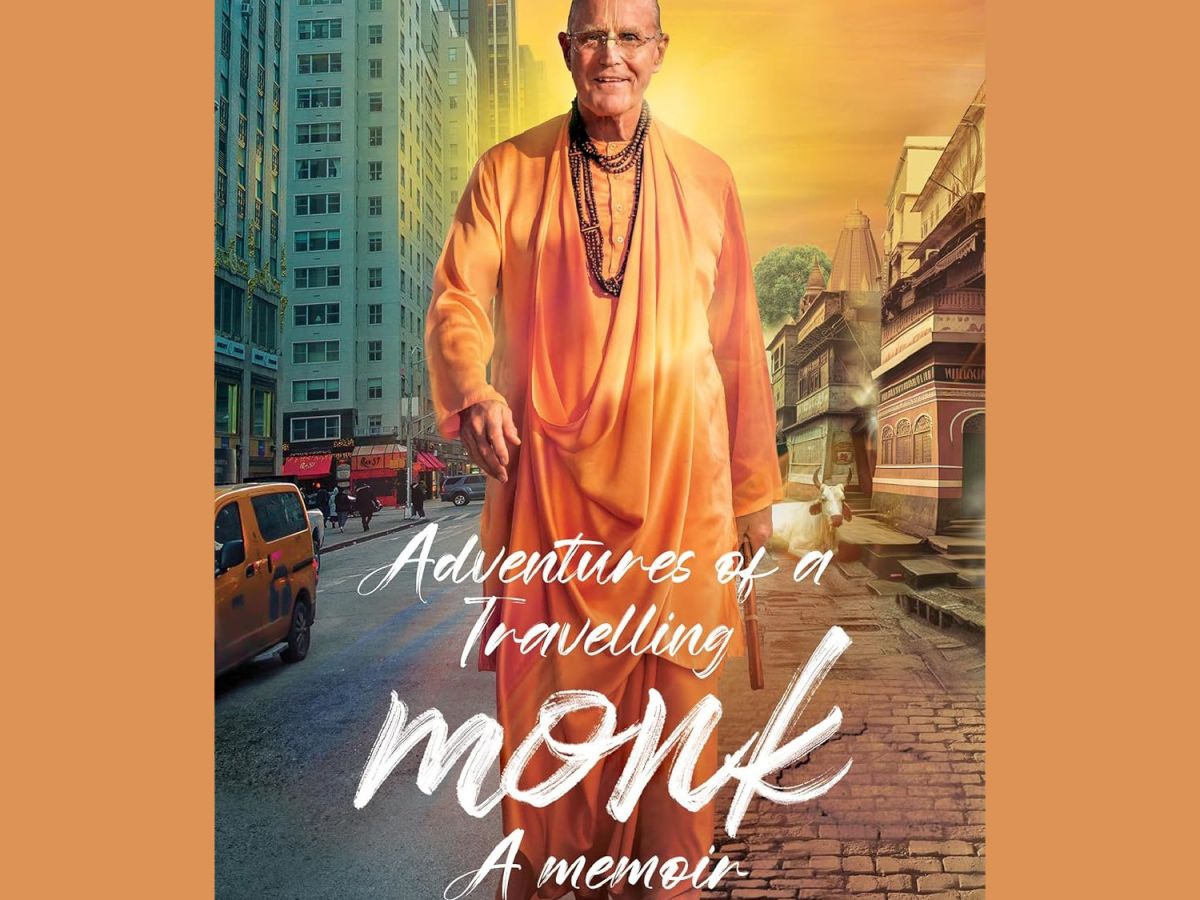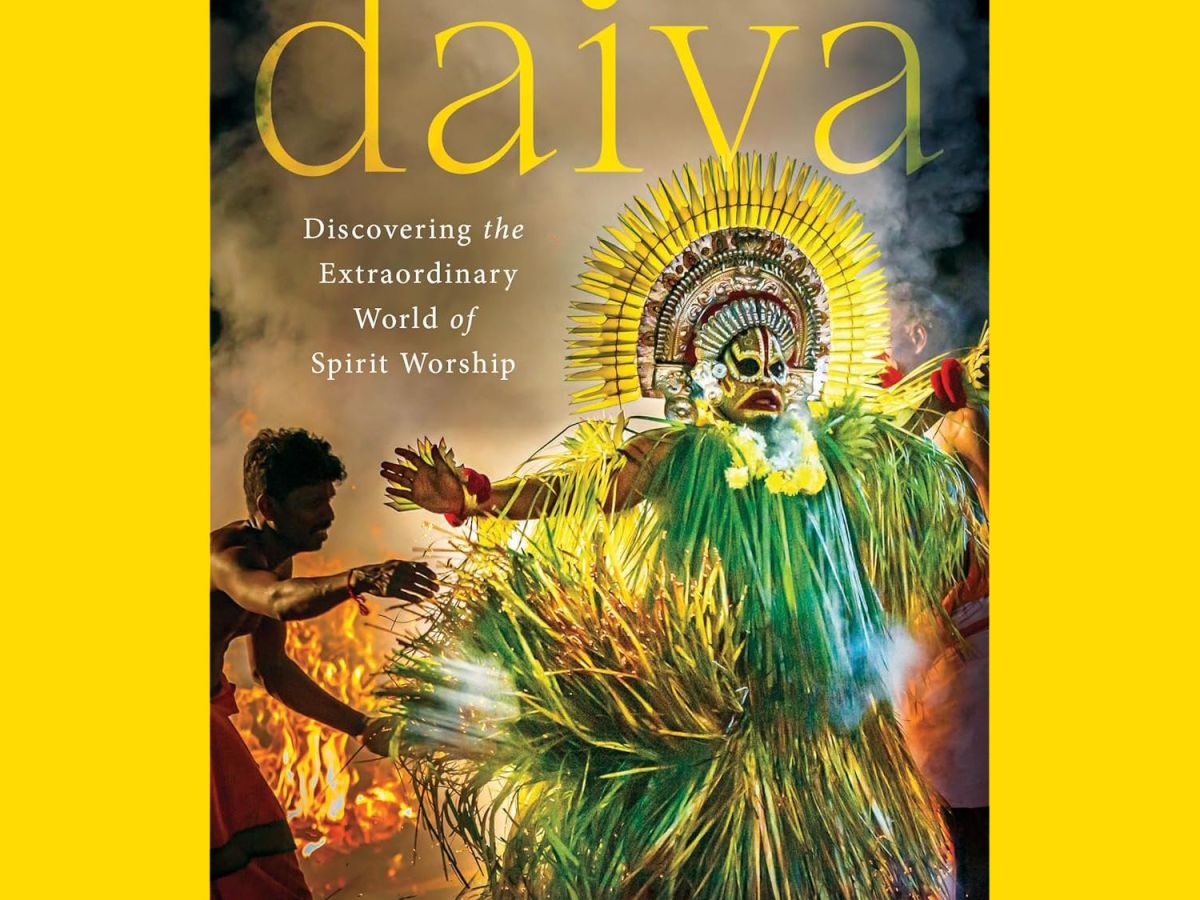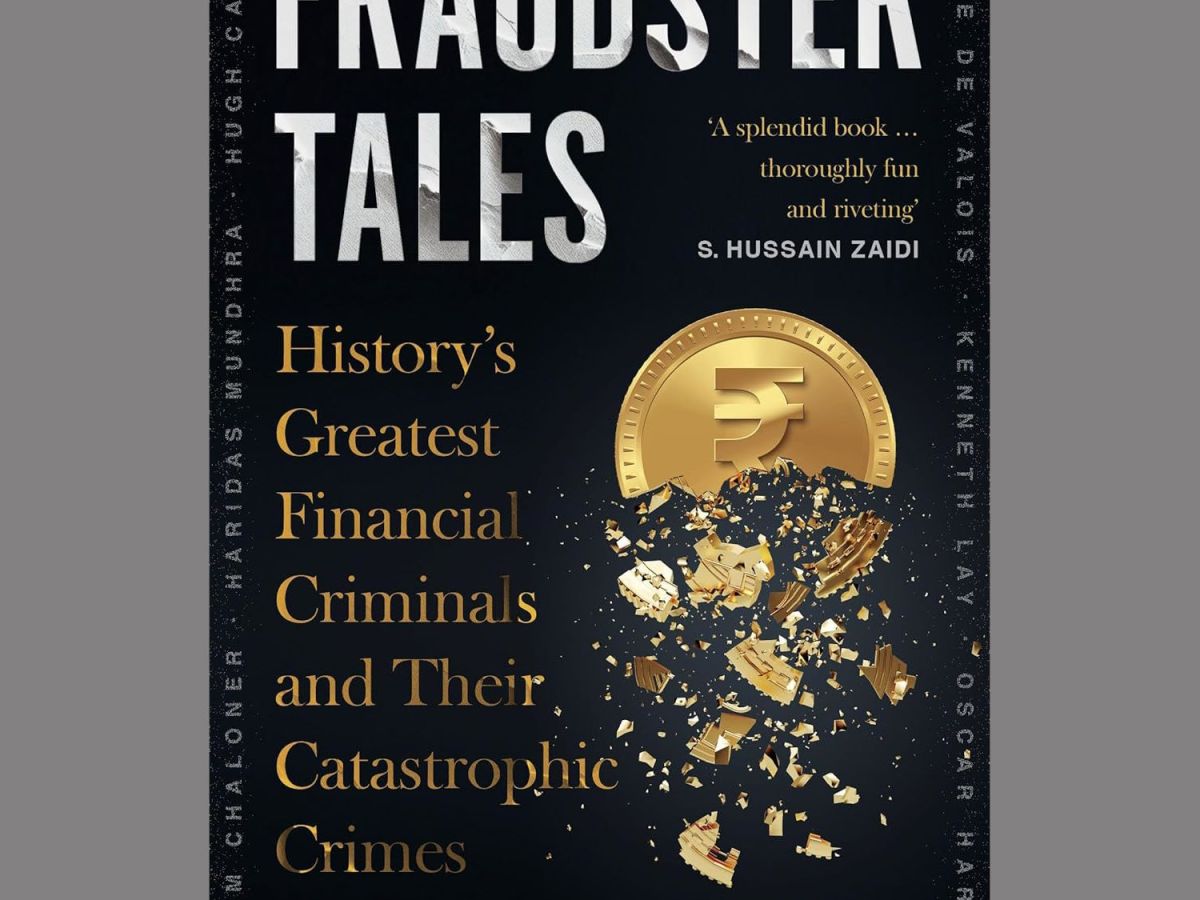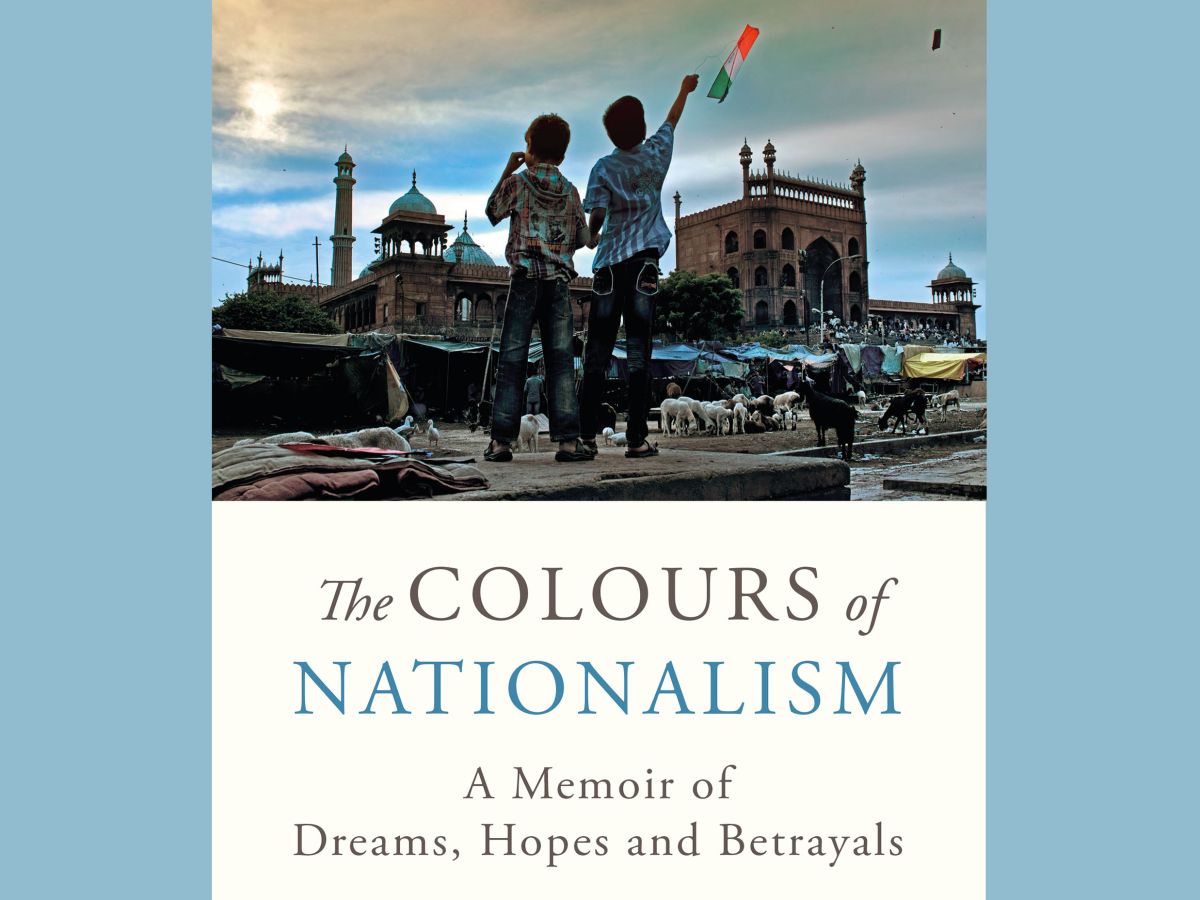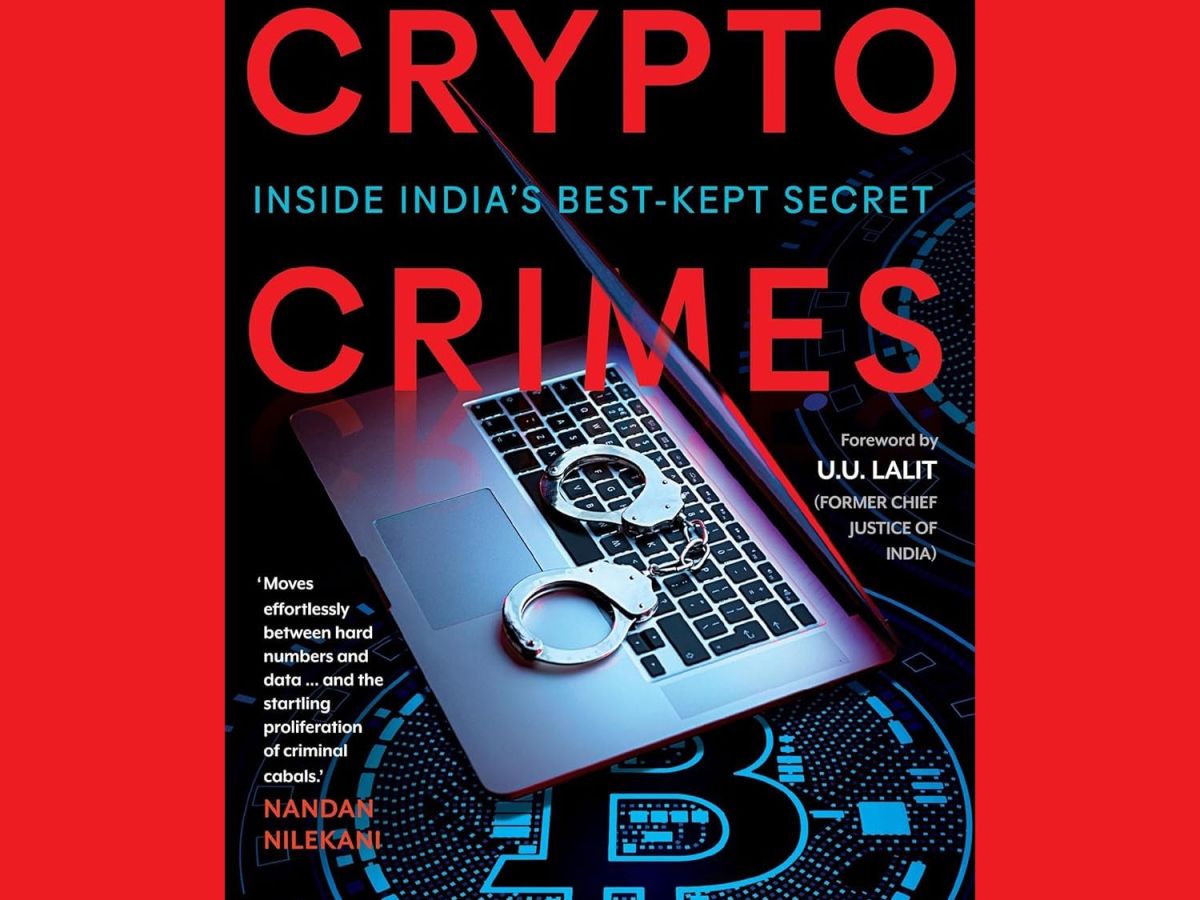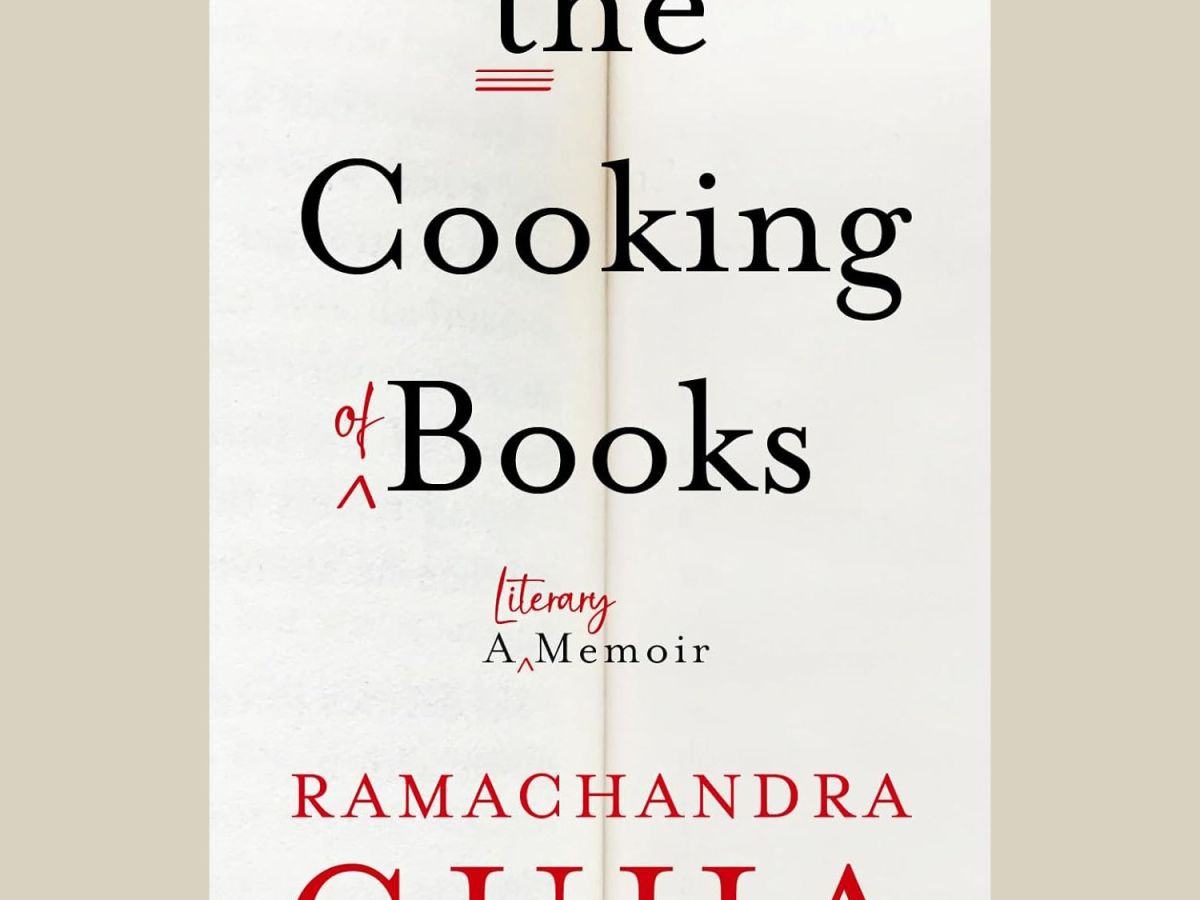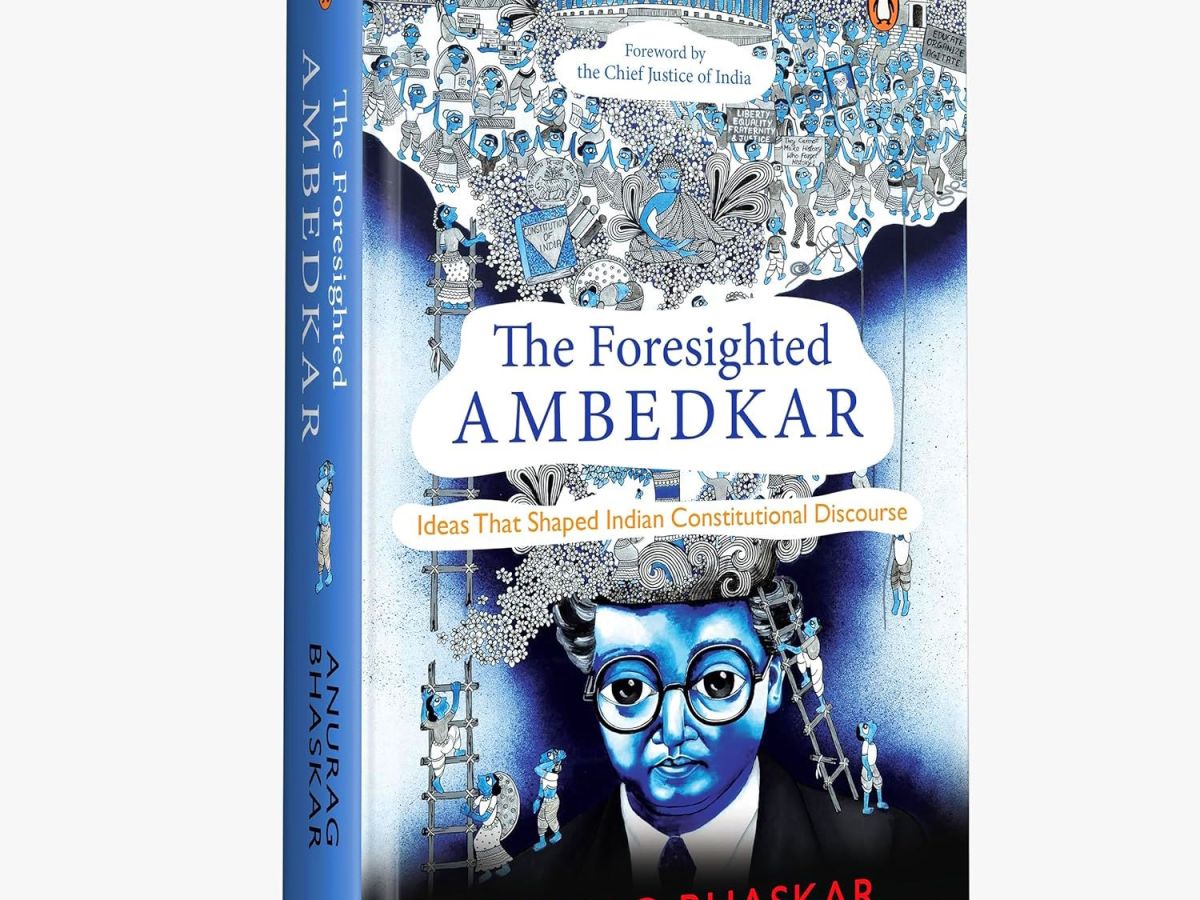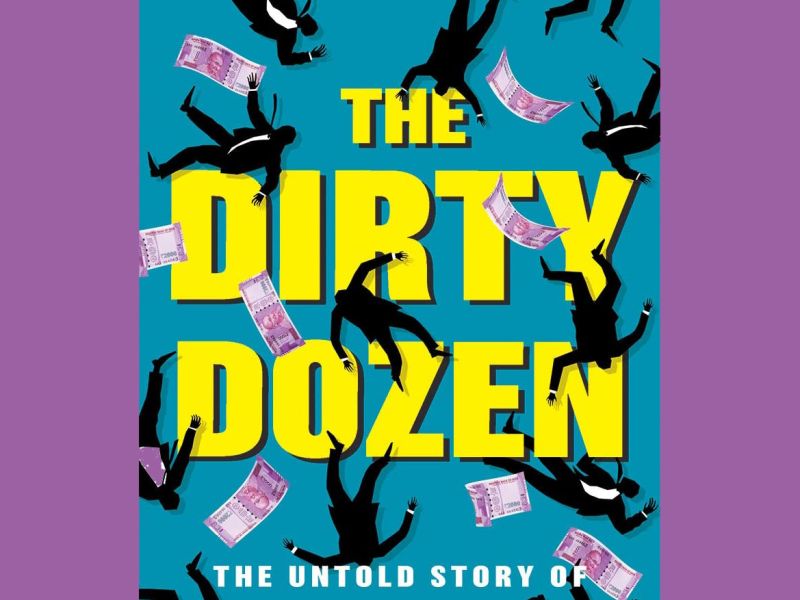Regular readers of this website may have noticed, I usually only write about books that I absolutely loved reading, or at least liked to a fair extent. But where there are hits, there will also always be misses, right? And sure enough, of the hundreds of books I’ve bought over the last few years, there are many that I bought with great expectations, which came to nought. Books written by highly regarded authors, highly-rated books that have good, very good or even excellent ratings on leading forums and websites, that didn’t work for me. So, I thought putting together a short list of such books might well be interesting. I’d like to point out here that while I didn’t enjoy reading the books mentioned herein, that doesn’t necessarily mean you won’t either; reading likes and dislikes can be wildly different for all us, of course. Also, I do not mean to cast aspersion upon the writing capabilities of the authors who’ve written these books; I would, instead, suspect it’s my own limited mental faculties that may have stopped me from appreciating these works. Be that as it may, here’s my list of dashed expectations – highly-rated books, which just didn’t work for me.

Masters of Doom, by David Kushner
‘Masters of Doom is the amazing true story of the Lennon and McCartney of video games: John Carmack and John Romero. Together, they ruled big business. They transformed popular culture. And they provoked a national controversy. More than anything, they lived a unique and rollicking American Dream, escaping the broken homes of their youth to co-create the most notoriously successful game franchises in history – Doom and Quake – until the games they made tore them apart,’ says the publisher’s note. ‘Americans spend more money on video games than on movie tickets. Masters of Doom is the first book to chronicle this industry’s greatest story, written by one of the medium’s leading observers. David Kushner takes readers inside the rags-to-riches adventure of two rebellious entrepreneurs who came of age to shape a generation. The vivid portrait reveals why their games are so violent and why their immersion in their brilliantly designed fantasy worlds offered them solace. And it shows how they channelled their fury and imagination into products that are a formative influence on our culture. This is a story of friendship and betrayal, commerce and artistry – a powerful and compassionate account of what it’s like to be young, driven, and wildly creative,’ it adds.
Given my deep love for computers and technology in general (I used to be a computer animation instructor in the mid-1990s…), I was quite excited at the prospect of reading Masters of Doom and bought a copy fully expecting to love the story of Carmack and Romero, rock stars of the gaming industry. To my mind, this was supposed to be high-octane drama, a story of cutting-edge tech, big personalities, tough challenges, supermodel girlfriends, millions of dollars and over-the-top lifestyles, perhaps with a chunk of intrigue and betrayal thrown in for good measure. The book has a 4.29 rating on Goodreads and a 4.5 star rating on Amazon. And yet… it didn’t work for me, probably because of the writing style; the story seems to meander this way and that, often gets lost in trivial detail and simply isn’t interesting enough in the way it’s told. Most unexpectedly, a dud.
If you still want to give it a shot, Masters of Doom is available on Amazon. Or, you could try reading these instead.

Tim Cook: The Genius Who Took Apple to the Next Level, by Leander Kahney
‘In 2011, Tim Cook took on an impossible task – following in the footsteps of one of history’s greatest business visionaries, Steve Jobs. Facing worldwide scrutiny, Cook (who was often described as shy, unassuming and unimaginative) defied all expectations. Under Cook’s leadership Apple has soared: its stock has nearly tripled to become the world’s first trillion-dollar company. From the massive growth of the iPhone to new victories like the Apple Watch, Cook is leading Apple to a new era of success. Journalist Leander Kahney reveals how CEO Tim Cook has led Apple to astronomical success after the death of Steve Jobs in 2011,’ says the publisher’s note. ‘The death of Steve Jobs left a gaping void at one of the most innovative companies of all time. Jobs wasn’t merely Apple’s iconic founder and CEO; he was the living embodiment of a global megabrand. It was hard to imagine that anyone could fill his shoes, especially not Cook, the intensely private executive who many thought of as Apple’s operations drone. But, as journalist Leander Kahney reveals in this definitive book, things at Apple couldn’t be better. Under Cook’s principled leadership, Apple is pushing hard into renewable energy, labour and environmentally-friendly supply chains, user privacy, and highly-recyclable products. From the massive growth of the iPhone to lesser-known victories like the Apple Watch, Cook is leading Apple to a new era of success. Drawing on access with several Apple insiders, Kahney tells the inspiring story of how one man attempted to replace someone irreplaceable, and, through strong, humane leadership, supply chain savvy, and a commitment to his values, succeeded more than anyone had thought possible. He’s also spearheaded a cultural revolution within the company. Since becoming CEO, Cook has introduced a new style of management that emphasizes kindness, collaboration and honesty, and has quietly pushed Apple to support sexual and racial equal rights and invest heavily in renewable energy. Drawing on authorised access with several Apple insiders, Kahney tells the inspiring story of how one man attempted to replace the irreplaceable and succeeded better than anyone thought possible,’ it adds.
Now, while I’m no Apple fanboy and strongly believe the Rs 1.4 lakh iPhone 14 Pro Max is a terrible waste of money, I’m still quite interested in how Apple works as a tech company and wanted to know more about the stories behind Apple’s product development and marketing strategies. So what better way to do that than pick up a copy of Tim Cook and find out exactly how boy genius does what he does. But, no, the book turned out to be dull – the story is flat and it didn’t hold my interest. It probably doesn’t help that it’s written like one extra-long article for a Web journal, with tons of unnecessary references and irrelevant details. There’s no incisive, hard-hitting story here, no focus, no fascinating tech details, just… a lot of nothing. Other readers might not fully agree with me – the book has a 4-star rating on Amazon and a 3.69 rating on Goodreads.
You might still want to get a copy of Tim Cook anyway. Who knows, you might like it. Or, you could try reading these other books on tech businesses.

Alan Turing: The Enigma, by Andrew Hodges
‘It is only a slight exaggeration to say that the British mathematician Alan Turing (1912-1954) saved the Allies from the Nazis, invented the computer and artificial intelligence, and anticipated gay liberation by decades – all before his suicide at age forty-one. This New York Times–bestselling biography of the founder of computer science, with a new preface by the author that addresses Turing’s royal pardon in 2013, is the definitive account of an extraordinary mind and life,’ says the publisher’s note. ‘Capturing both the inner and outer drama of Turing’s life, Andrew Hodges tells how Turing’s revolutionary idea of 1936, the concept of a universal machine, laid the foundation for the modern computer and how Turing brought the idea to practical realization in 1945 with his electronic design. The book also tells how this work was directly related to Turing’s leading role in breaking the German Enigma ciphers during World War II, a scientific triumph that was critical to Allied victory in the Atlantic. At the same time, this is the tragic account of a man who, despite his wartime service, was eventually arrested, stripped of his security clearance, and forced to undergo a humiliating treatment program, all for trying to live honestly in a society that defined homosexuality as a crime. The inspiration for a major motion picture starring Benedict Cumberbatch and Keira Knightley, Alan Turing: The Enigma is a gripping story of mathematics, computers, cryptography, and homosexual persecution,’ it adds.
Having always been deeply interested in Turing’s work, I was excited when I got my hands on this book, hoping for a great story. But it was not to be. This book (which has a 4-star rating on Amazon and a 3.74 rating on Goodreads) is a feeble attempt at telling Turing’s story. What should have ideally been a focused, hard-hitting and powerful narrative is merely vapid, gently drifting all over the place, unable to hold attention or interest. It’s almost as if the author himself wasn’t sufficiently interested – or involved – choosing instead to tell Turing’s story in a rather distant manner, not doing justice to either the man or the subject. Take my word for it – skip the book and watch the movie instead; Benedict Cumberbatch’s The Imitation Game, which was ‘inspired’ by the book, is just so much better than the book itself.
Alan Turing: The Engima is available on Amazon, though I wouldn’t recommend you buy it. Try reading these instead.

Capital: The Eruption of Delhi, by Rana Dasgupta
‘In Capital, Commonwealth Prize–winning author Rana Dasgupta examines one of the great trends of our time: the expansion of the global elite. Capital is an intimate portrait of the city of Delhi which bears witness to the extraordinary transmogrification of India’s capital. But it also offers a glimpse of what capitalism will become in the coming, post-Western world. The story of Delhi is a parable for where we are all headed. The boom following the opening up of India’s economy plunged Delhi into a tumult of destruction and creation: slums and markets were ripped down, and shopping malls and apartment blocks erupted from the ruins. Many fortunes were made, and in the glassy stores nestled among the new highways, customers paid for global luxury with bags of cash. But the transformation was stern, abrupt and fantastically unequal, and it gave rise to strange and bewildering feelings. The city brimmed with ambition and rage. Violent crimes stole the headlines,’ says the publisher’s note.
‘In the style of VS Naipaul’s now classic personal journeys, Dasgupta shows us this city through the eyes of its people. With the lyricism and empathy of a novelist, Dasgupta takes us through a series of encounters – with billionaires and bureaucrats, drug dealers and metal traders, slum dwellers and psychoanalysts – which plunge us into Delhi’s intoxicating, and sometimes terrifying, story of capitalist transformation. Together these people comprise a generation on the cusp, like that of Gilded Age New York: who they are, and what they want, says a tremendous amount about what the world will look like in the rest of the twenty-first century. Interweaving over a century of history with his personal journey, Dasgupta presents us with the first literary portrait of one of the twenty-first century’s fastest-growing megalopolises – a dark and uncanny portrait that gives us insights, too, as to the nature of our own – everyone’s – shared, global future,’ it adds.
Now, I don’t know what made me buy this book. That it is the winner of the 2017 Ryszard Kapuściński Award for Literary Reportage or that it was short-listed for the Orwell Prize and for the Royal Society of Literature Ondaatje Prize was, for me, meaningless since I honestly don’t know what any of those awards / prizes signify. I had earlier read Suketu Mehta’s Maximum City and absolutely loved it, and I guessed I somehow assumed that what that book was for Bombay, Capital might be for Delhi. Couldn’t be more incorrect. Of all the chapters in the book, I found one that was reasonably interesting. All the others were… just boring as hell. The book, which has a 4.4-star rating on Amazon and 4.06 on Goodreads, is supposedly ‘an extraordinary portrait of the fastest-growing city in the world – and the rise of a new global elite.’ Hmm… I’m not too sure about that. I’d say it’s a bit mundane, a bit dull, perhaps even a bit pointless. We need another Suketu Mehta to come along and write a Maximum City for Delhi, because Capital definitely doesn’t have any sparkle whatsoever.
If you still think you might like it, Capital: The Eruption of Delhi is available on Amazon. Personally, I would recommend you look at these instead.

Deep Thinking: Where Machine Intelligence Ends and Human Creativity Begins, by Garry Kasparov
‘In May 1997, the world watched as Garry Kasparov, the greatest chess player in the world, was defeated for the first time by the IBM supercomputer Deep Blue. It was a watershed moment in the history of technology: machine intelligence had arrived at the point where it could best human intellect. It wasn’t a coincidence that Kasparov became the symbol of man’s fight against the machines. Chess has long been the fulcrum in development of machine intelligence; the hoax automaton ‘The Turk’ in the 18th century and Alan Turing’s first chess program in 1952 were two early examples of the quest for machines to think like humans – a talent we measured by their ability to beat their creators at chess. As the preeminent chess master of the 80s and 90s, it was Kasparov’s blessing and his curse to play against each generation’s strongest computer champions, contributing to their development and advancing the field. In this breakthrough book, Kasparov tells his side of the story of Deep Blue for the first time – what it was like to strategize against an implacable, untiring opponent. But more than that, he tells his story of AI more generally and how he’s evolved to embrace it, taking part in an urgent debate with philosophers worried about human values, programmers creating self-learning neural networks and engineers of cutting edge robotics,’ says the publisher’s note. ‘Kasparov uses his unrivalled experience to look into the future of intelligent machines and sees it bright with possibility. As many critics decry artificial intelligence as a menace, particularly to human jobs, Kasparov shows how humanity can rise to new heights with the help of our most extraordinary creations, rather than fear them. Deep Thinking is a tightly argued case for technological progress, from the man who stood at its precipice with his own career at stake,’ it adds.
Now, I like to play Chess (I play about half a dozen rounds on Chess.com almost every day), admire Kasparov and am fascinated with AI, supercomputers and quantum computing. So, getting this book was a no-brainer, right? I did, and somehow did not enjoy reading it. At all. The book has a 4.4 star rating on Amazon and gets a 3.91 on Goodreads. And yet, it didn’t work for me; Mr Kasparov seems to go on and on… and on, but there’s little substance here, little that’s not been said elsewhere, little that surprises the reader or make him sit up and say, ‘Wow! Now that’s a unique insight.’ Garry was a great Chess player. But as a writer? Hmm…
Want to read Deep Thinking anyway? You can get your copy from Amazon. Not that I recommend you do.

Hit Refresh : A Memoir, by Satya Nadella
‘Microsoft CEO tells the inside story of the company’s continuing transformation, while tracing his own journey from a childhood in India to leading some of the most significant changes of the digital era and offering his vision for the coming wave of intelligent technologies. Hit Refresh is about individual change, the transformation happening inside Microsoft, and the arrival of the most exciting and disruptive wave of technology humankind has experienced – including artificial intelligence, mixed reality, and quantum computing. It examines how people, organisations, and societies can and must transform, how they must ‘hit refresh’ in their persistent quest for new energy, new ideas, and continued relevance and renewal. Yet at its core, it’s about humans and how one of our essential qualities – empathy – will become ever more valuable in a world where technological advancement will alter the status quo as never before,’ says the publisher’s note. ‘In addition to his thoughts on these stunning scientific leaps, Satya Nadella discusses his fascinating childhood before migrating to the US and how he learned to lead along the way. He then shares his meditations as sitting CEO – one who is mostly unknown, following the brainy Bill Gates and energetic Steve Ballmer. Nadella explains how the company rediscovered its soul – transforming everything from its culture to its business partnerships to the fiercely competitive landscape of the industry itself. He concludes by introducing an equation to restore digital trust, ethical design principles, and economic growth for everyone,’ it adds.
As someone who’s now been using Microsoft products (various iterations of the Windows OS and the MS Office suite of applications) for almost 30 years and a firm believer in the dictum that it’s Microsoft (and not Apple) that’s the one company responsible for bringing the desktop computer to the masses, I was quite keen on reading Nadella’s take on Microsoft, and what future directions the company may take under his leadership. But, no go. For me, this book is flat and drab, a non-starter. Nadella may have the tech skills to be CEO of Microsoft, but when it comes to telling an engaging tale, he falls short by a fair margin. Again, most readers would disagree with that; the book has a 4.4-star rating on Amazon and a 3.79 on Goodreads. But I still stand by what I have to say – the book is quite dull.
Hit Refresh is available on Amazon if you really want to give it a shot. However, I’d recommend you look at these books instead.

Sovietistan, by Erika Fatland
‘An unforgettable journey through Central Asia, one of the most mysterious and history-laden regions of the world. Turkmenistan, Kazakhstan, Tajikistan, Kyrgyzstan, and Uzbekistan became free of the Soviet Union in 1991. But though they are new to modern statehood, this is a region rich in ancient history, culture, and landscapes unlike anywhere else in the world. Traveling alone, Erika Fatland is a true adventurer in every sense. In Sovietistan, she takes the reader on a compassionate and insightful journey to explore how their Soviet heritage has influenced these countries, with governments experimenting with both democracy and dictatorships,’ says the publisher’s note. ‘In Kyrgyzstani villages, she meets victims of the tradition of bride snatching; she visits the huge and desolate Polygon in Kazakhstan where the Soviet Union tested explosions of nuclear bombs; she meets shrimp gatherers on the banks of the dried out Aral Sea; she witnesses the fall of a dictator. She travels incognito through Turkmenistan, a country that is closed to journalists. She meets exhausted human rights activists in Kazakhstan, survivors from the massacre in Osh in 2010, and German Mennonites that found paradise on the Kyrgyzstani plains 200 years ago. We learn how ancient customs clash with gas production and witness the underlying conflicts between ethnic Russians and the majority in a country that is slowly building its future in nationalist colours. Once the frontier of the Soviet Union, life follows another pace of time. Amidst the treasures of Samarkand and the brutalist Soviet architecture, Sovietistan is a rare and unforgettable adventure,’ it adds.
I was beyond happy and excited when I got a copy of this book. The ’stans of Central Asia are, for me, deeply fascinating (visiting Samarkand and Bukhara, in Uzbekistan, has been a dream for a long time…) and I haven’t been able to find much reading material on that region. So, when Sovietistan came along, wow!, here was my opportunity to read about all the ’stans in one single book. But it was not to be; I found the book to quite boring and dull. Perhaps my expectations were misguided – I was looking for a travel story, maybe a bit of adventure, while the book itself is written in a dispassionate, sombre tone that’s more suited to a textbook on socio-cultural anthropology. Other readers have loved the book though; Sovietistan has a 4.6-star rating on Amazon and a 4.29 on Goodreads. Perhaps it’s just me – maybe my tastes are pedestrian and I don’t know a good book when I see one. But be that as it may, I have to admit I couldn’t finish reading this book, so there.
You could get a copy of Sovietistan on Amazon if you really wanted to, though if you like reading travel books, I’d recommend you take a look at these instead.
adventure advertising Allahabad Apple astrology audiobooks Banaras best-of lists Bombay book marketing business Calcutta cheap reads cityscapes corporate culture design fiction food Hinduism hippies history India Japan journalism journalists libraries literary agents memoirs memories money Mumbai music my life with books Persian photojournalism publishers publishing religion science-fiction self-help technology travel trends Varanasi wishlists


